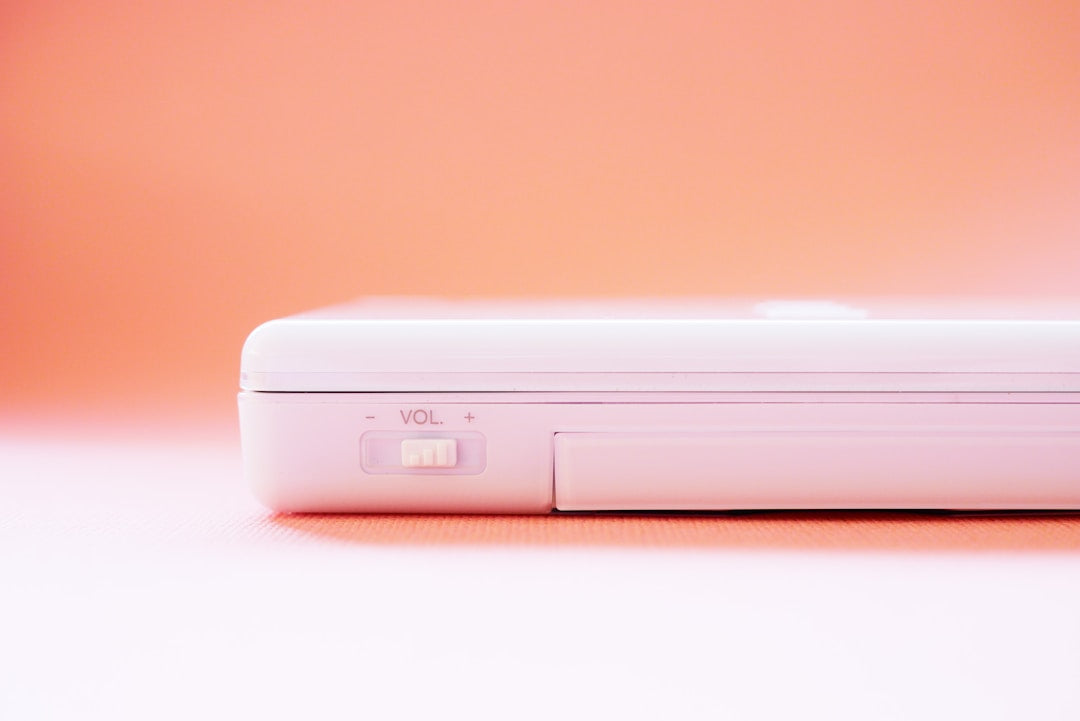Keeping Your Brass Looking Its Best: The Importance of the Right Cleaner
Brass jewelry offers a unique blend of rugged charm and sophisticated style, making it a popular choice for men's accessories. Its warm, golden hue adds a distinct touch to any look, from casual wear to more formal attire. However, like many metals, brass is susceptible to tarnish over time. Understanding how to properly clean and maintain your brass pieces is crucial to preserving their appeal. Using the right brass jewelry cleaner and techniques ensures your accessories remain statement pieces for years to come. Neglecting this can lead to dullness, discoloration, and a loss of that characteristic shine. Why is cleaning your brass jewelry so essential? It's not just about aesthetics; proper care maintains the integrity and longevity of the metal.
Understanding Brass Tarnish: Why Cleaning is Necessary
Before diving into cleaning methods, it's helpful to understand why brass tarnishes. Brass is an alloy, primarily composed of copper and zinc. When exposed to oxygen, moisture, and various environmental elements (like skin oils, sweat, lotions, or even air pollution), the copper component reacts. This oxidation process forms a layer on the surface, known commonly as tarnish.
Tarnish typically appears as a dulling of the metal's surface, often progressing to dark brown or even greenish spots. It's important to distinguish tarnish from patina. While tarnish is generally considered undesirable buildup that dulls the shine, patina is an oxidation layer that can develop intentionally or naturally over a long period, sometimes valued for adding character (especially on vintage pieces). For most contemporary men's brass jewelry, however, the goal is usually to remove tarnish and restore the original luster. Knowing if and how brass tarnishes helps you choose the appropriate cleaning approach.
Choosing Your Weapon: Commercial vs. DIY Brass Jewelry Cleaner Options
When your brass accessories start losing their shine, you have two main routes: using a commercial brass jewelry cleaner or opting for a homemade solution. Each has its pros and cons.
Commercial Brass Jewelry Cleaners
These products are specifically formulated to tackle brass tarnish. They often contain chemicals designed to dissolve oxidation quickly and efficiently.
- Pros: Generally very effective, fast-acting, often include polishing agents for a bright finish, readily available.
- Cons: Can contain harsh chemicals (requiring good ventilation and gloves), may be too aggressive for delicate pieces or those with gemstones/inlays, potentially more expensive over time.
- Tips: Always follow the manufacturer's instructions precisely. Test on an inconspicuous area first. Ensure the product is suitable for jewelry, not just industrial brass items. Avoid cleaners containing harsh abrasives that could scratch the surface.
DIY Brass Jewelry Cleaner Solutions
Many effective brass cleaners can be made using common household ingredients. These natural brass cleaner options are often preferred for being gentler and more eco-friendly.
- Pros: Cost-effective, readily available ingredients, generally gentler on the metal and environment, avoids harsh chemicals.
- Cons: May require more effort and time than commercial cleaners, effectiveness can vary depending on the severity of tarnish, risk of scratching if abrasive ingredients (like salt) aren't fully dissolved or are rubbed too hard.
- Tips: Always use soft cloths. Rinse thoroughly after cleaning to remove any residue. Pat dry completely to prevent water spots and new tarnish.
Effective DIY Brass Jewelry Cleaner Recipes & Methods
Looking for a reliable homemade brass jewelry cleaner? Here are some popular and effective methods using household staples. Remember to always be gentle and test on a small, hidden area first, especially if your piece has intricate details or mixed materials.
1. Lemon Juice & Baking Soda Paste
This is a classic combination for removing tarnish from brass. The acidity of the lemon juice reacts with the tarnish, while the baking soda acts as a mild abrasive and neutralizer.
- Ingredients: Juice of half a lemon, 1-2 teaspoons of baking soda.
-
Method:
- Mix the lemon juice and baking soda to form a paste. It will fizz initially.
- Apply the paste to the brass jewelry using a soft cloth or your fingers.
- Gently rub the paste over the tarnished areas. For stubborn spots, let the paste sit for 15-30 minutes.
- Rinse the jewelry thoroughly under warm running water. Ensure all paste residue is removed, especially from crevices.
- Dry completely with a clean, soft cloth. Buff gently to shine.
- Best for: Moderate tarnish, general cleaning.
2. Vinegar, Salt, and Flour Paste
Another acidic approach, this paste uses vinegar to dissolve tarnish, salt as a mild abrasive, and flour to create a workable paste.
- Ingredients: 1/2 cup white vinegar, 1 teaspoon salt, enough flour to make a paste.
-
Method:
- Dissolve the salt completely in the vinegar. Stir well to avoid scratching with undissolved salt crystals.
- Gradually add flour, mixing until you achieve a smooth paste consistency.
- Apply the paste to the brass piece, covering all tarnished areas.
- Let the paste sit for 10-30 minutes, depending on the level of tarnish.
- Rinse thoroughly with warm water.
- Dry completely with a soft cloth and buff.
- Best for: Heavier tarnish, but ensure salt is fully dissolved.
3. Mild Soap and Water
For light cleaning and regular maintenance (removing daily grime, oils, and very light tarnish), simple soap and water is often sufficient.
- Ingredients: Warm water, a few drops of mild dish soap (avoid harsh detergents).
-
Method:
- Create a soapy solution in a small bowl.
- Submerge the brass jewelry for a few minutes.
- Use a very soft brush (like an old, soft toothbrush) or a soft cloth to gently scrub the surface, paying attention to details and crevices.
- Rinse thoroughly with clean water.
- Dry immediately and buff with a soft, dry cloth. Crucially, ensure the piece is completely dry.
- Best for: Regular upkeep, removing surface dirt and oils, very light tarnish.
4. Ketchup or Tomato Paste
It sounds unusual, but the mild acidity in tomatoes can help break down tarnish.
- Ingredients: Ketchup or plain tomato paste.
-
Method:
- Apply a thin layer of ketchup or tomato paste to the tarnished brass.
- Let it sit for 30 minutes to an hour.
- Wipe off the paste with a damp cloth.
- Rinse thoroughly with warm water.
- Dry completely and buff.
- Best for: Mild to moderate tarnish, especially on larger surface areas.
For more in-depth guidance, exploring resources on how to clean brass jewelry specifically can offer additional tips and visual aids.
Polishing Your Brass Jewelry After Cleaning
Cleaning removes the tarnish, but polishing restores the high shine. After using your chosen brass jewelry cleaner and thoroughly drying the piece, use a dedicated brass polishing cloth or a clean, soft microfiber cloth.
- Gently rub the surface of the jewelry in circular motions or back-and-forth strokes.
- Apply even pressure, but don't rub excessively hard, especially on plated items (though most quality men's brass jewelry is solid brass).
- Continue buffing until you achieve the desired level of shine.
- A good polishing cloth can often remove very light tarnish on its own during regular buffing.
Regular polishing, even between deep cleans, helps maintain the luster and slow down the tarnishing process.
How Often Should You Clean Your Brass Jewelry?
The frequency depends on several factors:
- How often you wear it: Pieces worn daily will likely need cleaning more often than those worn occasionally.
- Your body chemistry: Some people's skin oils and sweat react more strongly with brass.
- Environment: Exposure to humidity, chemicals (like chlorine in pools, or hairspray/cologne), and pollution accelerates tarnishing.
- Storage: Proper storage significantly reduces the need for frequent cleaning.
As a general guideline:
- Wipe down after each wear: Use a soft cloth to remove oils and moisture.
- Light clean (soap/water): Every few weeks or as needed for regular wear pieces.
- Deep clean (using a dedicated brass jewelry cleaner or DIY paste): When noticeable tarnish appears, perhaps every few months or less often if stored well.
Preventing Tarnish on Your Brass Accessories
While tarnish is natural, you can take steps to slow it down:
- Store Properly: Keep brass jewelry in a cool, dry place. Store pieces individually in airtight bags (like small zip-top bags) or a lined jewelry box with anti-tarnish strips. Avoid humid areas like bathrooms.
- Keep it Dry: Remove brass jewelry before swimming, showering, or washing hands. Water, especially chlorinated or salt water, accelerates tarnish. Dry it immediately if it gets wet.
- Avoid Chemicals: Put on jewelry *after* applying lotions, colognes, hairsprays, or other chemical products. These substances can react with the brass.
- Wipe After Wear: As mentioned, a quick wipe with a soft cloth after wearing removes skin oils and moisture that contribute to tarnishing.
- Consider Lacquer (Use Caution): Some brass items are coated with a clear lacquer to prevent tarnish. While effective initially, lacquer can wear off unevenly or chip, making cleaning difficult. Re-lacquering is possible but often best left to professionals. Most quality raw brass jewelry is sold unlacquered, allowing its natural character to develop or be easily maintained.
When Not to Use a Brass Jewelry Cleaner
Sometimes, the aged look is desirable. If your brass piece has developed an even, attractive patina that you appreciate, you might choose not to clean it aggressively. In such cases, a gentle wipe with a soft cloth to remove surface dirt might be all that's needed. Avoid acidic cleaners or heavy polishing if you want to preserve the patina.
Final Thoughts: Maintaining Your Style
Your brass jewelry is an investment in your personal style. Keeping it clean and well-maintained ensures it continues to make the right statement. Whether you opt for a commercial brass jewelry cleaner for convenience or prefer a homemade approach for its gentle nature, regular care is key. By understanding how tarnish forms and implementing simple cleaning and prevention strategies, you can enjoy the distinctive appeal of your men's brass accessories for the long haul.

